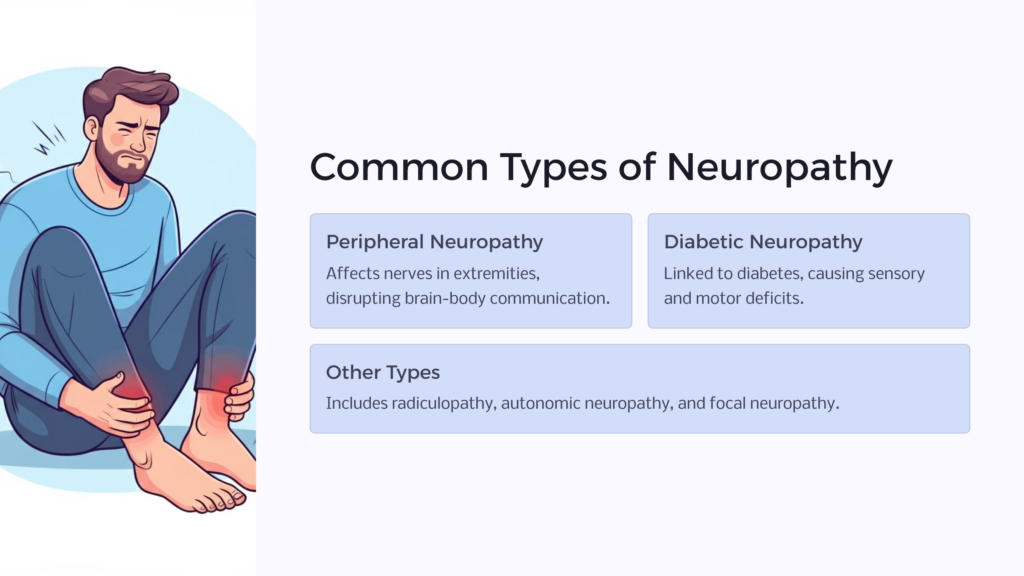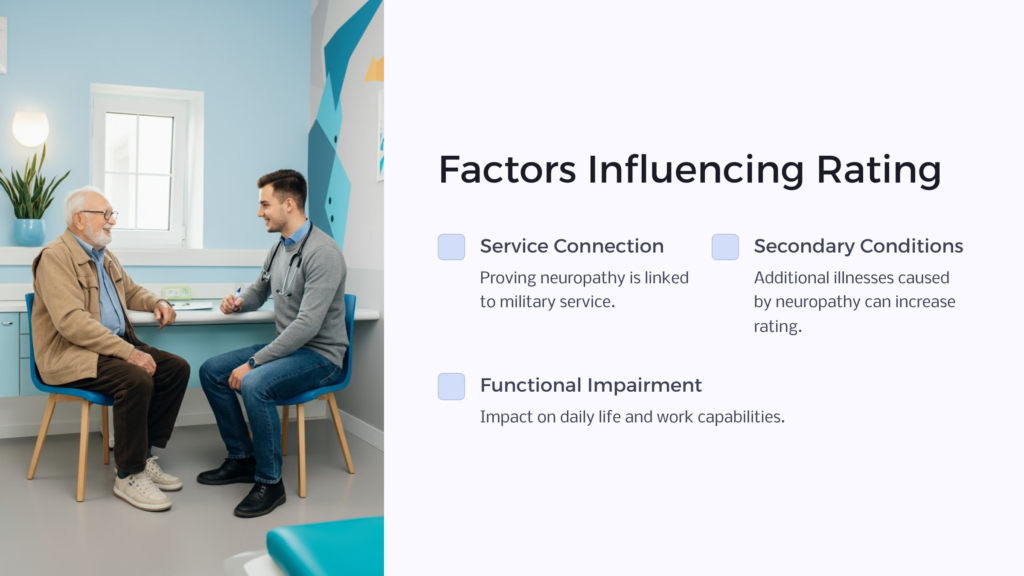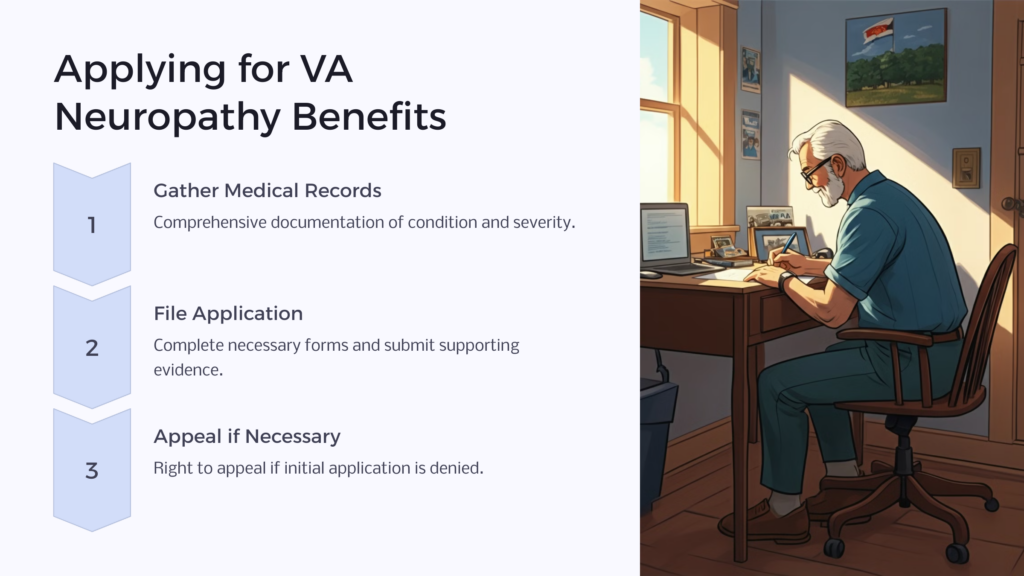The Veterans Affairs (VA) Neuropathy Rating Chart is a system for evaluating the severity of neuropathy in veterans and determining the appropriate level of disability benefits. This comprehensive system was developed by the Department of Veterans Affairs to provide objective, standardized evaluations of conditions related to nerve damage or dysfunction.
Purpose of VA Neuropathy Rating Chart
The VA Neuropathy Rating Chart serves several key purposes. First, it provides a fair, consistent method for assessing the extent of a veteran’s neuropathy and how it impairs their ability to work and function in daily life. This ensures equal treatment for all veterans suffering from this condition. Furthermore, the rating chart directly impacts the amount of compensation veterans receive, thus making it an essential tool in ensuring they can manage their condition and maintain their quality of life.
Definition of Neuropathy
Neuropathy, also known as peripheral neuropathy, refers to a range of health problems resulting from damage to the peripheral nerves, which transmit messages between the central nervous system (the brain and spinal cord) and the rest of the body. Neuropathy can manifest as numbness, tingling, pain, and weakness in the hands, limbs, or other parts of the body.
Common Types of Neuropathy Handled By VA

Peripheral Neuropathy
Peripheral neuropathy is one of the most common types the VA encounters. This condition primarily affects the nerves in a person’s extremities, such as hands, feet, arms, and legs, disrupting communication between the brain and these parts of the body.
Diabetic Sensory-Motor Peripheral Neuropathy
This is a specific form of peripheral neuropathy linked to diabetes. People with this condition experience sensory and motor deficits due to high blood sugar levels damaging nerves over time.
Other Types of Neuropathy
The VA also deals with several other forms of neuropathy, including radiculopathy, autonomic neuropathy, and focal neuropathy, each with unique symptoms and impacts on an individual’s functional capability.
Overview of VA Rating System
According to the VA’s rating system, nerve conditions are categorized into three classes based on severity: mild, moderate, and severe. Each category is accompanied by a specific rating percentage, which corresponds to a proportional monthly compensation.
An essential step in the VA rating process involves connecting neuropathy to the veteran’s military service. This implies that the neuropathy either developed or was aggravated during their service period.
Mild Ratings
With mild ratings, a veteran experiences symptoms such as numbness, tingling, and intermittent pain, but these do not significantly interfere with their overall functionality.
Moderate Ratings
Moderate ratings are assigned when symptoms become more frequent or intense, interfering with the veteran’s normal work and daily activities but not to a debilitating extent.
Severe Ratings
Severe ratings are given when neuropathy severely hinders a veteran’s ability to function independently or perform work duties.
Examples and Scenarios of Different Rating Results
An example of a mild rating could be a veteran experiencing occasional numbness in their hands, but still able to carry out their duties without major hindrance. However, if the veteran frequently drops items due to persistent numbness or weakness, they may be assigned a moderate rating. Veterans suffering from constant pain and loss of independent mobility would likely receive a severe rating.
Factors That Influence Rating

Service Connection
The veteran must prove that their neuropathy is service-connected. This may involve demonstrating exposure to specific conditions or substances during service that triggered or exacerbated the neuropathy.
Secondary Conditions
If the veteran can prove their neuropathy causes secondary illnesses or conditions, this could increase their overall disability rating.
Aggravation of Pre-existing Conditions
If a pre-existing condition is exacerbated by service, it can play a significant role in determining a higher disability rating.
Functional Impairment
The VA also heavily considers how much the veteran’s daily life, particularly their work life, is impaired by their neuropathy when determining the disability rating. This can be defined by loss of motion, neuropathic pain, or sensory impairment.
How to Apply for VA Neuropathy Disability Benefits

Medical records play a critical role in the application process. These records provide documentation of the veteran’s condition, severity, and the impact on their ability to function. The more thorough the medical documentation, the better the veteran’s chances of being approved for disability benefits.
Filing for disability benefits involves completing the necessary forms and collecting supportive evidence, such as medical records and service records.
If the initial application is denied, veterans have the right to appeal the decision. This involves a more detailed submission of evidence and potentially another hearing to determine the outcome.
Common Mistakes In VA Neuropathy Claims
Misdiagnosis and Mistakes in Records
A common mistake veterans face involves errors or inaccuracies in their medical records. A misdiagnosis or incorrectly recorded symptoms can lead to a lower disability rating than deserved.
Wrong Assertions about the Cause of Neuropathy
Incorrectly attributing the cause of neuropathy can also significantly affect claim outcomes. If the onset of neuropathy can’t be correctly linked to a veteran’s service or a service-related incident, the claim will be denied.
Missing Medical Evidences
Lacking substantial medical evidence to prove the existence or severity of neuropathy can significantly hamper the outcome of a VA claim.
Tips for Veterans Applying for Benefits with Neuropathy

Gathering Necessary Documents
Veterans should ensure they have comprehensive medical documentation detailing diagnoses, treatments, and the impact of neuropathy on everyday life.
Importance of Regular Check-ups
Regular medical check-ups are essential for keeping track of the progression of neuropathy and obtaining updated documentation that could support a claim or appeal.
Retaining a Competent Lawyer
Retaining an experienced VA lawyer can significantly improve a veteran’s chances of a successful claim or appeal. Lawyers who specialize in VA claims understand the nuances of the process and can help create a strong case.
Conclusion
The VA Neuropathy Rating chart serves as a crucial tool for determining the impact of neuropathy on a veteran’s functionality and livelihood. It is segmented into mild, moderate, and severe ratings, reflecting the progression and severity of the condition.
Understanding the VA Neuropathy Rating chart is essential for any veteran suffering from this condition, as it directly impacts the level of benefits they receive. It is also imperative to gather comprehensive medical documentation and potentially enlist the services of a skilled VA attorney to better navigate the application and appeal process.
 Benefits.com Advisors
Benefits.com Advisors
With expertise spanning local, state, and federal benefit programs, our team is dedicated to guiding individuals towards the perfect program tailored to their unique circumstances.
Rise to the top with Peak Benefits!
Join our Peak Benefits Newsletter for the latest news, resources, and offers on all things government benefits.



















